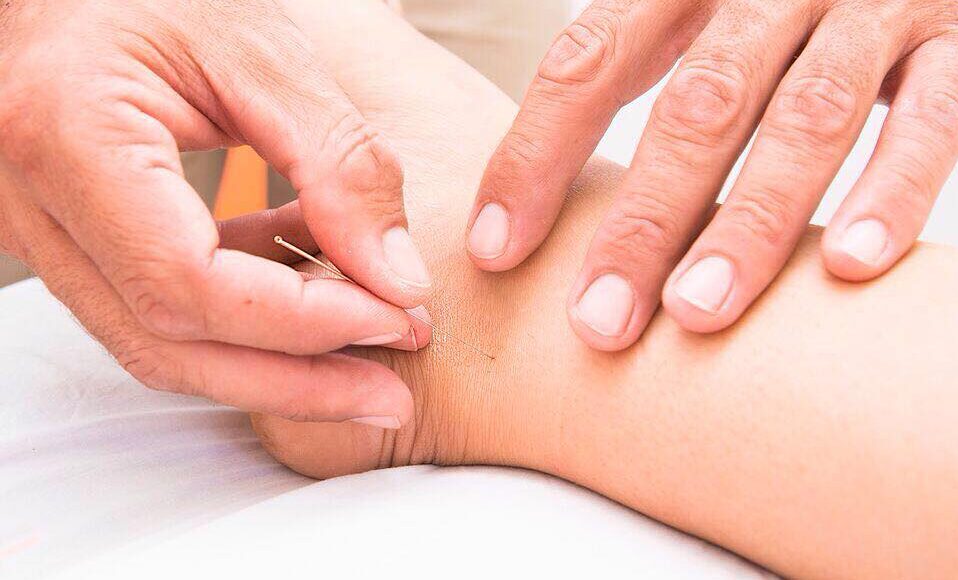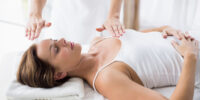Comparing Chinese Medicine Modalities: Choosing The Right Approach For Your Health Needs

Chinese medicine offers a wide range of modalities that have been used for centuries to promote health and well-being. From acupuncture to herbal medicine, Tai Chi to cupping therapy, there are various approaches that can address different health needs.
This article aims to provide an objective and impersonal comparison of these Chinese medicine modalities, assisting readers in choosing the right approach for their specific health requirements.
Acupuncture is a well-known modality that involves the insertion of thin needles into specific points on the body to stimulate energy flow.
Herbal medicine utilizes natural substances, such as plants and minerals, to restore balance and treat ailments.
Tai Chi and Qi Gong are mind-body practices that combine gentle movements, breathing exercises, and meditation to enhance overall health.
Tui Na massage, cupping therapy, and moxibustion are other modalities that involve physical manipulation and stimulation of the body.
By understanding the principles, benefits, and potential risks associated with each modality, individuals can make informed decisions about which approach aligns best with their health needs.
It is essential to consult with a qualified Chinese medicine practitioner to receive personalized guidance and ensure optimal results.
Acupuncture
Acupuncture, a traditional Chinese medicine modality, involves the insertion of thin needles into specific points on the body to stimulate the flow of Qi and restore balance to the body’s energy system. It is based on the concept of meridians, channels through which Qi flows.
Acupuncture aims to correct imbalances in Qi, which is believed to be the vital life force that governs overall health. The insertion of needles is thought to activate specific points along the meridians, facilitating the flow of Qi and promoting healing.
Acupuncture has been used for thousands of years to treat various ailments and conditions, including pain, digestive disorders, and emotional imbalances. It is often considered safe when performed by trained practitioners and is recognized by the World Health Organization as an effective treatment option for certain conditions.
Herbal Medicine
Herbal medicine is a traditional form of treatment that utilizes natural plant-based remedies. It has been practiced for centuries in various cultures, including Chinese medicine. This approach involves the use of medicinal plants, which are believed to possess therapeutic properties that can help restore balance and promote healing in the body.
Here are four key aspects of herbal medicine:
- Individualized prescriptions: Herbal medicine practitioners create personalized formulas based on the patient’s specific health needs and constitution.
- Holistic approach: Herbal medicine aims to address the root cause of the illness rather than just treating the symptoms, taking into account the patient’s overall well-being.
- Safety: When prescribed by a trained professional, herbal medicine can be a safe and effective treatment option, with minimal side effects compared to pharmaceutical drugs.
- Integration with other modalities: Herbal medicine can be used in conjunction with other Chinese medicine modalities, such as acupuncture, to enhance the overall treatment outcome.
Overall, herbal medicine offers a natural and holistic approach to healthcare, providing individuals with personalized treatment options that consider their unique needs and circumstances.
Tai Chi
Tai Chi, a mind-body practice originating in ancient China, emphasizes slow and deliberate movements combined with deep breathing and mental focus to promote physical and mental well-being. This traditional Chinese medicine modality has gained popularity worldwide for its numerous health benefits. Practicing Tai Chi regularly has been shown to improve balance, flexibility, and muscle strength, making it especially beneficial for older adults and individuals with chronic conditions. Additionally, Tai Chi has been found to reduce stress, anxiety, and depression, enhancing overall mental well-being. The practice is accessible to people of all ages and fitness levels, as it involves gentle movements that can be modified according to individual needs. To illustrate the different Tai Chi movements, the following table provides a brief description of four common forms: Chen, Yang, Wu, and Sun.
| Form | Description |
|---|---|
| Chen | Combines slow and fast movements, with both explosive and soft techniques. |
| Yang | Characterized by slow, flowing movements and relaxed postures. |
| Wu | Focuses on small, compact movements and emphasizes internal energy flow. |
| Sun | Integrates traditional Tai Chi movements with elements of other martial arts. |
By incorporating Tai Chi into their routine, individuals can enhance their physical fitness and mental well-being, making it a valuable modality within the realm of Chinese medicine.
Qi Gong
Qi Gong is a traditional Chinese practice that involves a series of energetic exercises and movements.nnIt is designed to cultivate and balance the body’s vital energy, known as Qi.nnQi Gong has been found to have numerous benefits for physical and mental health, including improved strength, flexibility, and balance, as well as reduced stress and anxiety.
Energetic exercises and movements
Meticulously choreographed movements and exercises that focus on the body’s energy flow are an integral part of Chinese medicine, offering a visually captivating and harmonious approach to improving one’s health.
Energetic exercises, such as Tai Chi and Qigong, are commonly practiced in Chinese medicine to promote physical and mental well-being. These exercises involve slow, deliberate movements combined with deep breathing and focused intention. By stimulating the flow of Qi, or vital energy, within the body, these exercises aim to restore balance and harmony.
Energetic exercises can help improve flexibility, strength, and balance, as well as reduce stress and promote relaxation. They are often recommended as a complementary therapy for various health conditions, including chronic pain, cardiovascular disorders, and mental health issues.
Incorporating energetic exercises into one’s daily routine can contribute to overall well-being and provide a holistic approach to health care.
Benefits for physical and mental health
Energetic exercises and movements have numerous benefits for both physical and mental health. These practices, derived from traditional Chinese medicine, aim to balance the body’s energy flow and promote overall well-being. Physically, energetic exercises can improve flexibility, strength, and coordination. They can also enhance cardiovascular health, boost the immune system, and reduce the risk of chronic diseases. Mentally, these exercises can help reduce stress, anxiety, and depression by promoting relaxation and improving mood. Moreover, they can increase mental clarity, focus, and concentration. By incorporating energetic exercises into one’s daily routine, individuals can experience improved physical fitness and mental well-being. To highlight the benefits of these exercises, a table comparing different modalities of energetic exercises and their specific advantages can be included:
| Modality | Physical Benefits | Mental Benefits |
|---|---|---|
| Tai Chi | Improves balance, flexibility, and strength | Reduces stress and anxiety, improves mood |
| Qigong | Enhances cardiovascular health, boosts immune system | Increases mental clarity and concentration |
| Yoga | Improves posture, increases muscle tone and flexibility | Reduces depression, promotes relaxation |
This table can serve as a visual aid to better understand the unique benefits of each modality and assist individuals in choosing the approach that best suits their health needs.
Tui Na Massage
One effective modality in Chinese medicine for addressing various health needs is Tui Na massage.
Tui Na massage is a form of Chinese therapeutic massage that aims to promote the flow of Qi (energy) in the body to restore balance and alleviate physical and mental health conditions.
Here are four benefits of Tui Na massage:
- Pain relief: Tui Na massage can help relieve pain by targeting specific pressure points and using various techniques such as kneading, rolling, and stretching.
- Stress reduction: Tui Na massage can induce relaxation and reduce stress by promoting the release of endorphins, which are natural painkillers and mood enhancers.
- Improved circulation: Tui Na massage techniques can stimulate blood flow and enhance circulation, which can help deliver oxygen and nutrients to different parts of the body.
- Enhanced body function: Tui Na massage can help improve body function by addressing imbalances and blockages in the Qi flow, which can promote overall health and well-being.
Cupping Therapy
Cupping therapy, a traditional Chinese therapeutic technique, involves the use of suction cups to create a vacuum on the skin, stimulating blood flow and promoting healing. It is believed that this therapy can help alleviate pain, reduce inflammation, and improve circulation.
During a cupping session, the cups are placed on specific areas of the body, such as the back, shoulders, or limbs, and left in place for a few minutes. This causes the skin to turn red or purple and may leave temporary marks.
Cupping therapy is often used in conjunction with other Chinese medicine modalities, such as acupuncture and herbal medicine, to treat a variety of conditions, including musculoskeletal disorders, respiratory conditions, and digestive issues.
However, more research is needed to fully understand the effectiveness of cupping therapy and its underlying mechanisms.
Moxibustion
Moxibustion, a traditional therapeutic technique, involves the burning of mugwort herb near specific acupuncture points on the body to stimulate circulation and promote healing, potentially evoking a sense of intrigue and curiosity in the audience.
- Ancient origins: Moxibustion has been practiced for thousands of years in China and other East Asian countries. Its roots can be traced back to the Huangdi Neijing, a classic Chinese medical text dating back to the 3rd century BCE.
- Different approaches: There are various forms of moxibustion, including direct and indirect methods.
- Direct moxibustion involves placing small cones of moxa directly on the skin.
- Indirect moxibustion uses a barrier, such as ginger or salt, to protect the skin from direct heat.
- Therapeutic effects: Moxibustion is believed to stimulate the flow of qi (vital energy) and blood, warming the body and promoting healing. It is often used to treat conditions such as chronic pain, digestive disorders, and gynecological issues.
- Safety considerations: While generally considered safe, moxibustion should be performed by a trained practitioner to ensure proper technique and minimize the risk of burns or other adverse effects. It is important to consult with a qualified healthcare professional before undergoing moxibustion therapy.
Choosing the Right Modality for You
When it comes to choosing the right modality for your health needs, it is important to consider your specific health goals.
Each modality within Chinese medicine has its own unique benefits and focuses, so understanding your individual needs can help you make an informed decision.
Additionally, seeking professional guidance from a trained practitioner can provide valuable insight and expertise in determining which modality may be most effective for your particular situation.
Considering your health needs and goals
To effectively choose the appropriate Chinese medicine modality for one’s health needs and goals, it is crucial to carefully consider various factors and consult with a qualified practitioner. When considering health needs and goals, the following factors should be taken into account:
- Specific health condition: Different Chinese medicine modalities may be more effective for certain health conditions. For example, acupuncture may be beneficial for pain management, while herbal medicine may be more suitable for addressing internal imbalances.
- Treatment preferences: Some individuals may prefer non-invasive approaches like acupuncture, while others may be more inclined towards herbal remedies or dietary changes.
- Time commitment: Certain modalities, such as acupuncture or qigong, may require regular sessions, while others, like herbal medicine, may involve longer treatment durations.
- Overall well-being: Chinese medicine modalities not only address specific health concerns but also promote overall well-being. Considering one’s physical, mental, and emotional health goals is important in choosing the right approach.
Seeking professional guidance
Professional guidance is essential in navigating the complexities of Chinese medicine modalities and ensuring the most suitable treatment for individual health concerns and goals. Seeking the advice of a qualified and experienced Chinese medicine practitioner can provide valuable insights and recommendations tailored to specific needs.
These professionals possess in-depth knowledge of the various modalities within Chinese medicine, such as acupuncture, herbal medicine, and qigong, and can offer informed guidance on which approach may be most beneficial. They can conduct thorough assessments of an individual’s health history, current condition, and goals, taking into account factors such as lifestyle, diet, and emotional well-being.
With their expertise, Chinese medicine practitioners can create personalized treatment plans that address the root causes of health issues and promote overall well-being. By seeking professional guidance, individuals can gain a greater understanding of their health needs and make informed decisions about the most appropriate Chinese medicine modality for their specific requirements.
Frequently Asked Questions
Are Chinese medicine modalities suitable for all health conditions?
Chinese medicine modalities are not suitable for all health conditions. Their effectiveness varies depending on the specific condition and individual. It is important to consult with a qualified practitioner to determine the most appropriate approach for one’s health needs.
Are there any potential side effects or risks associated with Chinese medicine modalities?
There are potential side effects and risks associated with Chinese medicine modalities. It is important to note that these can vary depending on the specific modality used and the individual’s health condition.
How long does it typically take to see results from Chinese medicine treatments?
The time it takes to see results from Chinese medicine treatments varies depending on the individual and the specific condition being treated. Some people may experience improvements within a few sessions, while others may require more time for noticeable changes.
Can Chinese medicine be used as a standalone treatment or should it be combined with Western medicine?
Chinese medicine can be used as a standalone treatment or in combination with Western medicine. The decision depends on the specific health needs and preferences of the individual, as well as the condition being treated.
Is Chinese medicine covered by health insurance?
Chinese medicine coverage by health insurance varies depending on the insurance provider and the specific policy. Some insurance plans may include coverage for certain Chinese medicine modalities, while others may not. It is advisable to check with your insurance provider for details regarding coverage.








